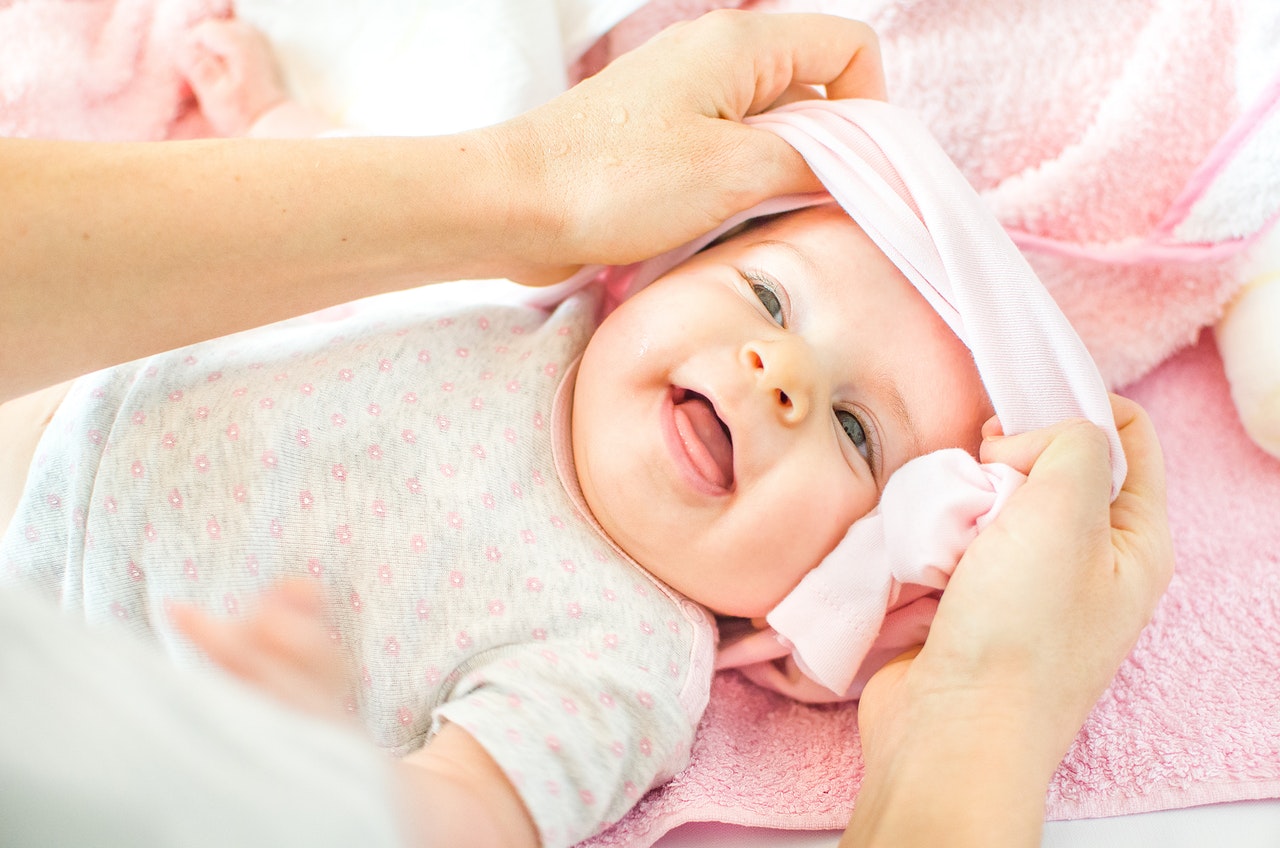Highlights
- A vast majority of Asian children (85%) today live with two married parents, as is the case for most white children (74%) and Hispanic children (61%). Only 36% of black children live with married parents. Post This
- In the past decade, the share of children who live with two married parents has dropped from 68 to 65 percent. Meanwhile, the share of children who live with two unmarried parents increased from 2.6% in 2007 to 3.6% in 2018. Post This
After a steady decline since the 1970s, the share of American children who live with two parents has leveled off in the past two decades. Today, nearly 7 in 10 children live with two parents, and this share remains flat since 2000.1 However, unlike their peers growing up a couple of decades ago, children under age 18 today are more likely to live with parents who are living together but not married.
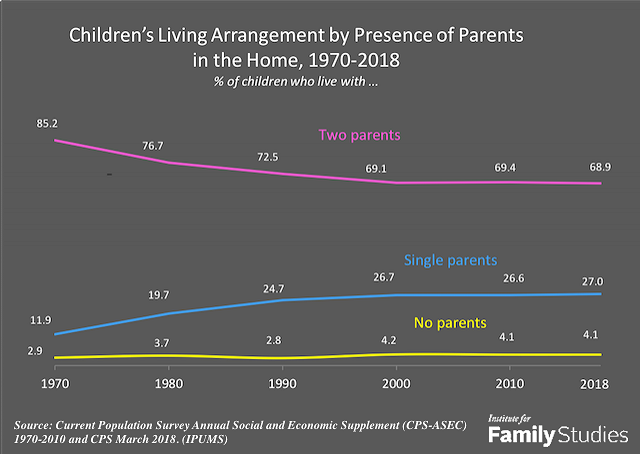
Notes: Based on children ages 0 to 17.
In the past decade, the share of children who live with two married parents has dropped from 68 to 65 percent. Meanwhile, the share of children who live with two parents who are unmarried increased from 2.6% in 2007 to 3.6% in 2018, according to a new analysis by the Institute for Family Studies. In other words, 5% of children in two-parent homes today live with unmarried parents.
Cohabitation is more common among single parents. In 2018, about 1 in 6 children (16%) living with single parents also live with their mother or father’s partner, up from 11% in 2007. And the share of all children living in this arrangement rose from 2.9% to 4.2% between 2007 and 2018. At the same time, the overall share of children who live with single parents has been steady in the past two decades.
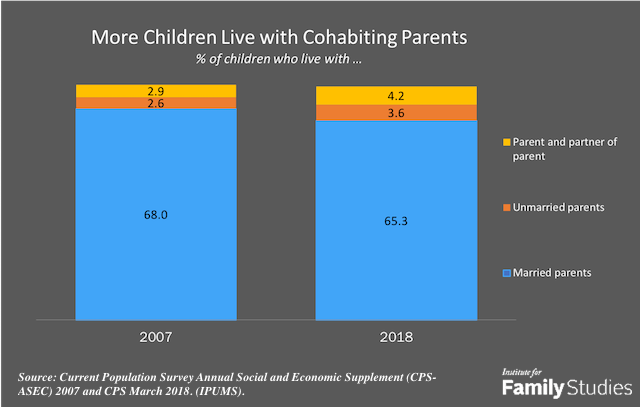
Notes: Based on children ages 0 to 17.
Taken together, an estimated 5.8 million American children live with cohabiting parents in 2018, which accounts for about 8% of all children under age 18. Among these children, 2.7 million live with their own two parents who are not married, and another 3.1 million live with one parent and that parent’s live-in partner (who is not biologically related to the child).
Younger children are more likely to experience this newer living arrangement. More than 10% of children under age 3 live in a cohabiting family in 2018—7% live with two cohabiting parents and 4% live with a single parent and his or her partner. In comparison, among teenagers between ages 12 and 17, about 6% live with cohabiting parents. Only 2% of these teenagers live with their own unmarried mom and dad, while 4% live with a single parent and his or her partner.
The living arrangements of children vary by their racial and ethnic background. A vast majority of Asian children (85%) today live with two married parents, as is the case for most white children (74%) and Hispanic children (61%). The share among black children who live with married parents is markedly lower—36% of black children live with married parents.
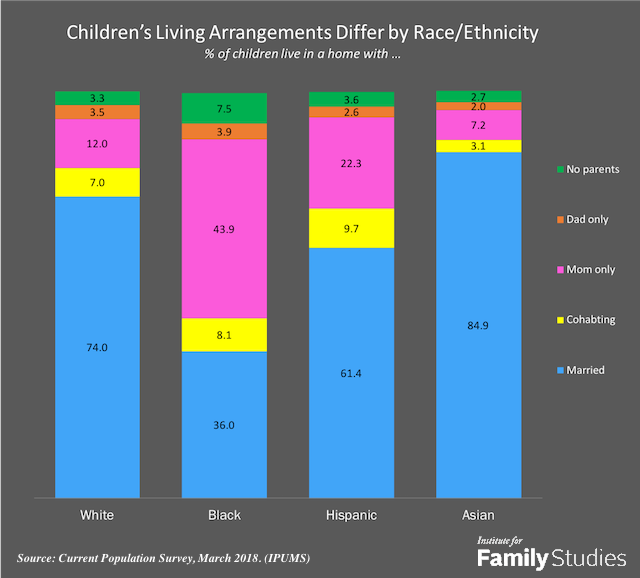
Notes: Based on children ages 0-17. Cohabiting parents include both parents and one parent w/unmarried
partner. Whites, blacks, and Asians include only non-Hispanics. Hispanics are of any race. Asians include Pacific Islanders.
Close to 10% of Hispanic children, 8% of black children, and 7% of white children live in a home with cohabiting parents, either with their two parents or one parent and his or her unmarried partner. Cohabiting parenthood is less common among Asian families, where only 3% of Asian children live with cohabiting parents.
Among children who live with single and non-cohabiting parents, most live with their mom. More than 4 in 10 black children live with their mom (44%), and this is the most common living arrangement for black children. The share of children living with a single mom is also relatively higher among Hispanic children (22%), compared with the share among white children (12%) and Asian children (7%).
On the other hand, a small proportion of American children (4%) live in a home without either of their parents. They could be living with grandparents, relatives, or be in foster care. About 8% of black children are in this type of living arrangement, and the share among children of other races and ethnicities is lower, averaging around 3 percent.
Children’s living environment while growing up also varies by parents’ education levels. It is well-documented that a parent’s higher education, especially a mother’s, is associated with better child outcomes. One of the reasons is that highly-educated and economically better-off adults are more likely to marry and stay married, which provides a relatively more stable environment for their children’s development.
Having a college-educated mother is associated with a much higher chance that children live with two married parents. For children whose mother is college educated, 86% live with two married parents in 2018, down slightly from 2007 when it was 88%.2 In contrast, 60% of children with high-school educated mothers live with married parents in 2018.
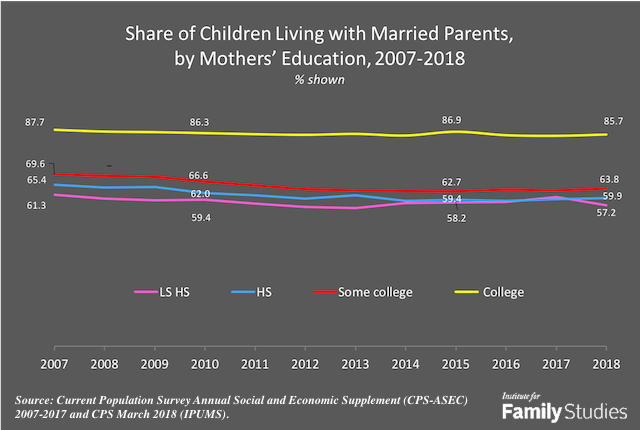
Notes: Based on children ages 0 to 17 who live in a household where mom is present.
Children of college-educated mothers are less likely to live in a cohabiting family: only 4% live with cohabiting parents, and about 10% live with a single mom. The share is higher among children whose mothers do not have a college degree. For example, 11% of children with high-school educated mothers live with cohabiting parents and 28% live with a single mom.
The growing share of children living in a cohabiting family, whether with their own parents or with one of their parents, adds another layer of complexity to American families today. Children can struggle in adapting to parents’ new living arrangements and navigating the relationships between their parent, his or her partner, and their other parent who does not live with them. Cohabitation is also associated with greater family instability, as most cohabitations in the U.S. are short lived. And family instability, in turn, is strongly linked to poorer child outcomes. Nevertheless, more and more children today find themselves living in a cohabiting family—at least for a time.
Wendy Wang is director of research at the Institute for Family Studies and a former senior researcher at Pew Research Center.
1. Based on the Census Bureau’s Current Population Surveys. Parents could be either biological, step, or adoptive parents. Two parents can be either same-sex or opposite-sex couples.
2. Based on children living in households where the mother is present. Children who live with a single dad or who live without their parents (about 9% of children in 2018) are not included in the analysis.
